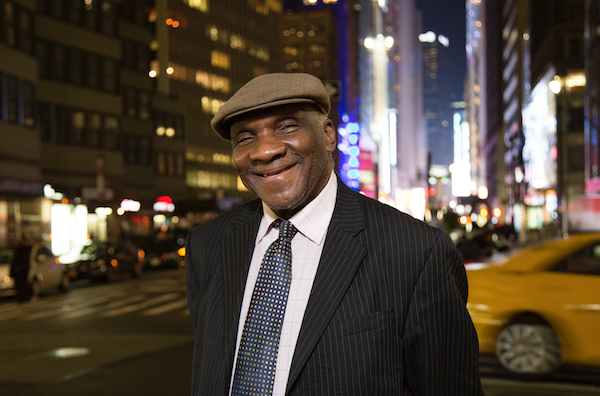Oct 28, 2025 10:47 AM
In Memoriam: Jack DeJohnette, 1942–2025
Jack DeJohnette, a bold and resourceful drummer and NEA Jazz Master who forged a unique vocabulary on the kit over his…

Harold Mabern (1936–2019)
(Photo: Jimmy Katz)In July 1975, 39-year-old Harold Mabern took the stage at Carnegie Hall during a solo piano night at the New York City edition of the Newport Jazz Festival. Amid a lineup of eight remarkable pianists—including the bedazzling French modernist Bernard Peiffer, the reflective Modern Jazz Quartet founder John Lewis and the exuberant ragtime master Eubie Blake—Mabern’s post-bop language, laced with Memphis blues and delivered with a rollicking punch, stood out.
Decades before he died of a heart attack on Sept. 17 at 83, that approach, coupled with a personal openness that drew people to him onstage and off, earned Mabern status as a stalwart of the jazz community. And while in the years following that Carnegie Hall concert he didn’t often enjoy a similarly august forum for his solo work, Mabern carved a niche among jazz pianists—valued as much for his dedication to his work as the work itself.
“He was all in,” said drummer Joe Farnsworth, who knew him for 33 years as a student, sideman and booker. “His life was all about the music and playing.”
Born in Memphis on March 20, 1936, Mabern took up drums early on—an experience reflected in the percussive approach he later developed on the piano. Self-taught, he spent his teen years immersed in the fertile Memphis scene, cultivating relationships with esteemed locals like pianist Phineas Newborn Jr. and saxophonist George Coleman, with whom he played off and on for years.
In 1954, he moved to Chicago, where Mabern and Frank Strozier, another Memphis saxophonist, worked in drummer Walter Perkins’ band. Five years later, he moved to New York, where he was hired by a who’s who of jazz innovators, among them trumpeters Miles Davis, Freddie Hubbard and Lee Morgan, for whom he wrote “The Beehive,” a highlight of Morgan’s 1970 Blue Note album Live At The Lighthouse.
Ironically, said George Wein, founder of the Newport Jazz Festival, Mabern’s sterling reputation as a sideman could overshadow his other work, threatening to consign him to membership in the club of “great, great players who never could break through as leaders.”
But he made albums of distinction. Mabern’s first, 1968’s A Few Miles From Memphis, featured Coleman and landed him in the rarified stable of artists signed to the Prestige label. His last, 2018’s The Iron Man: Live At Smoke (Smoke Sessions)—a two-disc effort with longtime associates Eric Alexander on saxophone, John Webber on bass and Farnsworth—closed a circle by including the debut album’s title track, a tribute to his hometown. Mabern, in fact, never forgot his roots, said Farnsworth, who got to know him starting in 1986 as a student at New Jersey’s William Paterson University, where the pianist taught for nearly four decades.
In a career spanning 60 years, Farnsworth said, Mabern more than once ran up against club owners who only wanted to book him with a horn player. But in the past decade, Farnsworth and his wife, vocalist Jennifer Farnsworth, helped secure dates for Mabern’s trio in Manhattan rooms like the Village Vanguard, Smalls and Dizzy’s Club Coca-Cola. In June, the trio played the Rochester International Jazz Festival, where Mabern also played solo and with a quartet. In the week before he died, Mabern was gigging with the trio at Fat Cat in Greenwich Village, and planned to take the group to France and Israel.
Always a soulful artist, Mabern, according to Farnsworth, had of late been focusing even more intensely on “playing from the heart.” And his life mirrored that focus.
Even on off nights, Mabern might be found holding court at the end of the bar at the club Smoke—a big man with a big smile embodying an ethos he articulated in an October 1971 DownBeat article: “[F]or me the most important thing is to be able to relate to the public.”
“Everybody loved him,” Wein said. DB

Jack DeJohnette boasted a musical resume that was as long as it was fearsome.
Oct 28, 2025 10:47 AM
Jack DeJohnette, a bold and resourceful drummer and NEA Jazz Master who forged a unique vocabulary on the kit over his…

D’Angelo achieved commercial and critical success experimenting with a fusion of jazz, funk, soul, R&B and hip-hop.
Oct 14, 2025 1:47 PM
D’Angelo, a Grammy-winning R&B and neo-soul singer, guitarist and pianist who exerted a profound influence on 21st…

To see the complete list of nominations for the 2026 Grammy Awards, go to grammy.com.
Nov 11, 2025 12:35 PM
The nominations for the 2026 Grammy Awards are in, with plenty to smile about for the worlds of jazz, blues and beyond.…

Drummond was cherished by generations of mainstream jazz listeners and bandleaders for his authoritative tonal presence, a defining quality of his style most apparent when he played his instrument unamplified.
Nov 4, 2025 11:39 AM
Ray Drummond, a first-call bassist who appeared on hundreds of albums as a sideman for some of the top names in jazz…

Flea has returned to his first instrument — the trumpet — and assembled a dream band of jazz musicians to record a new album.
Dec 2, 2025 2:01 AM
After a nearly five-decade career as one of his generation’s defining rock bassists, Flea has returned to his first…





